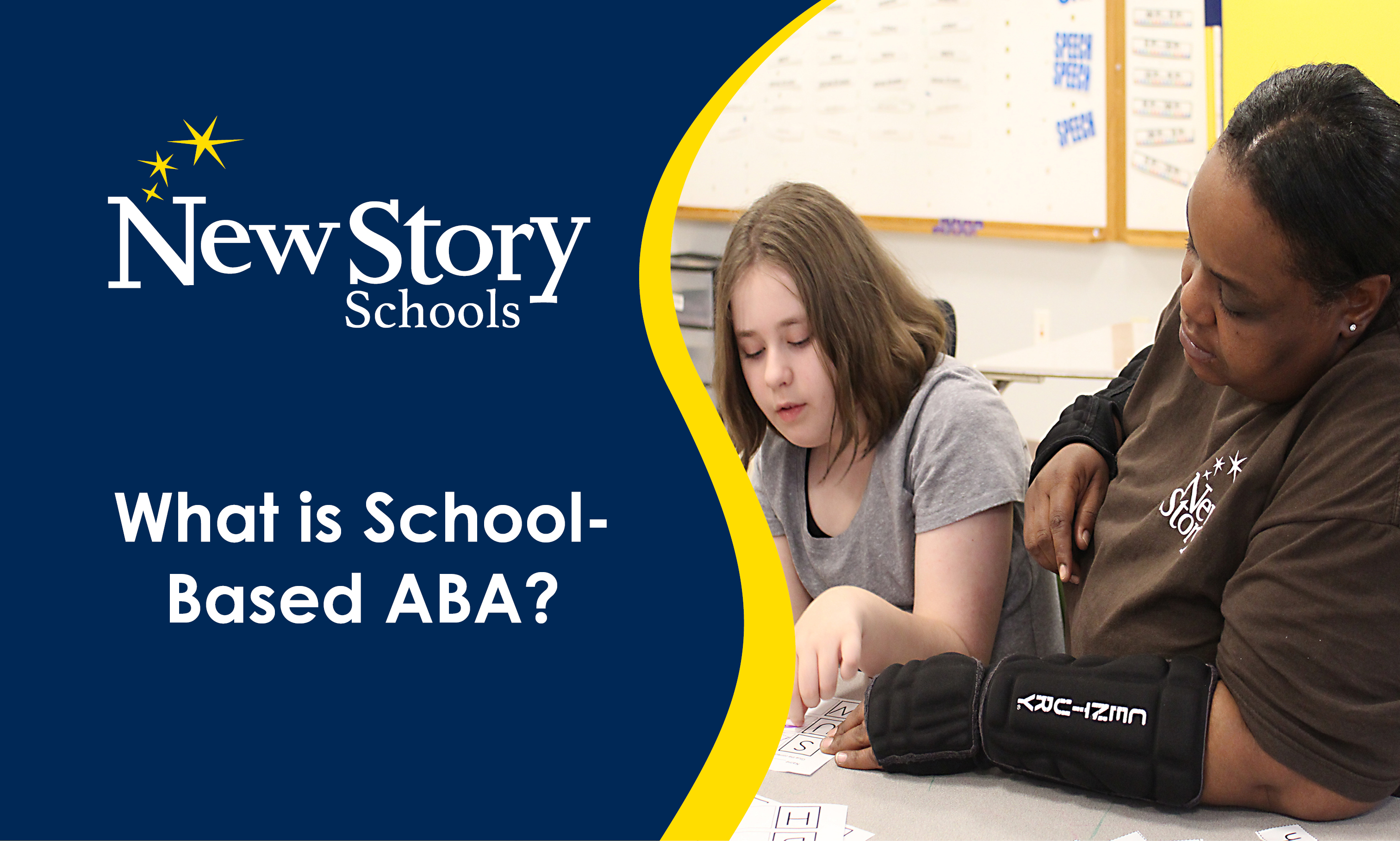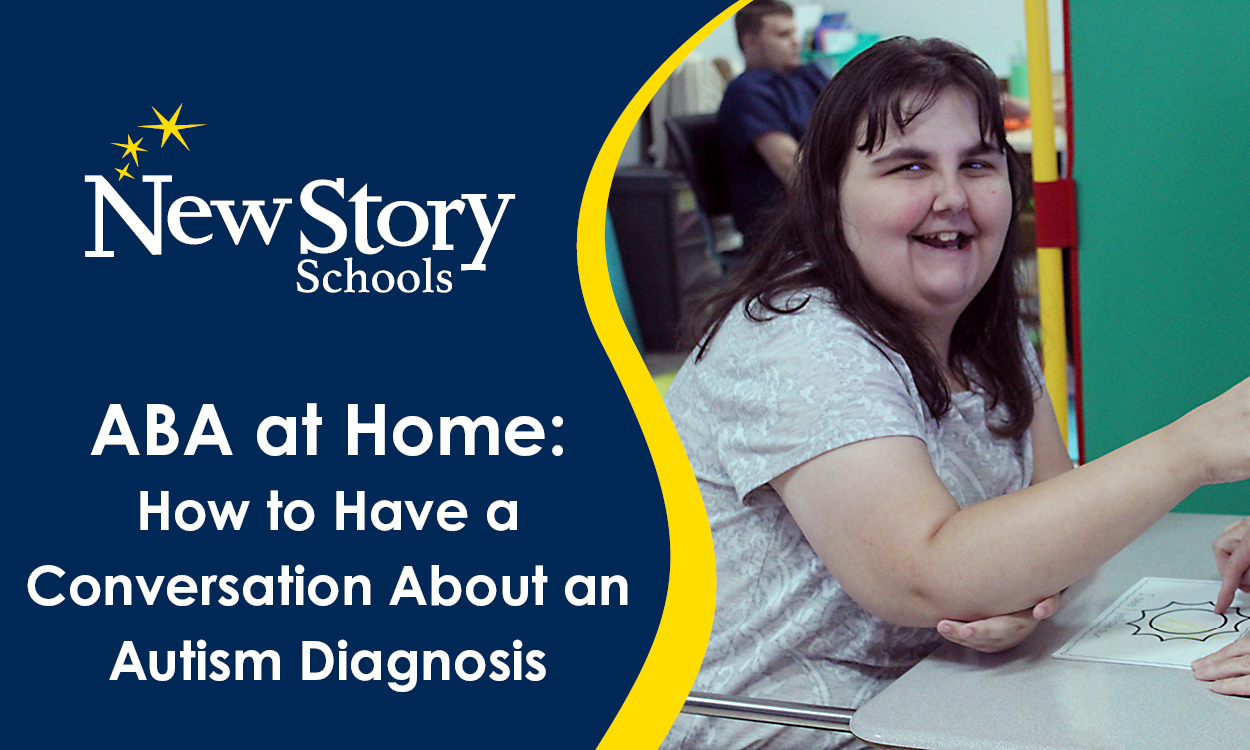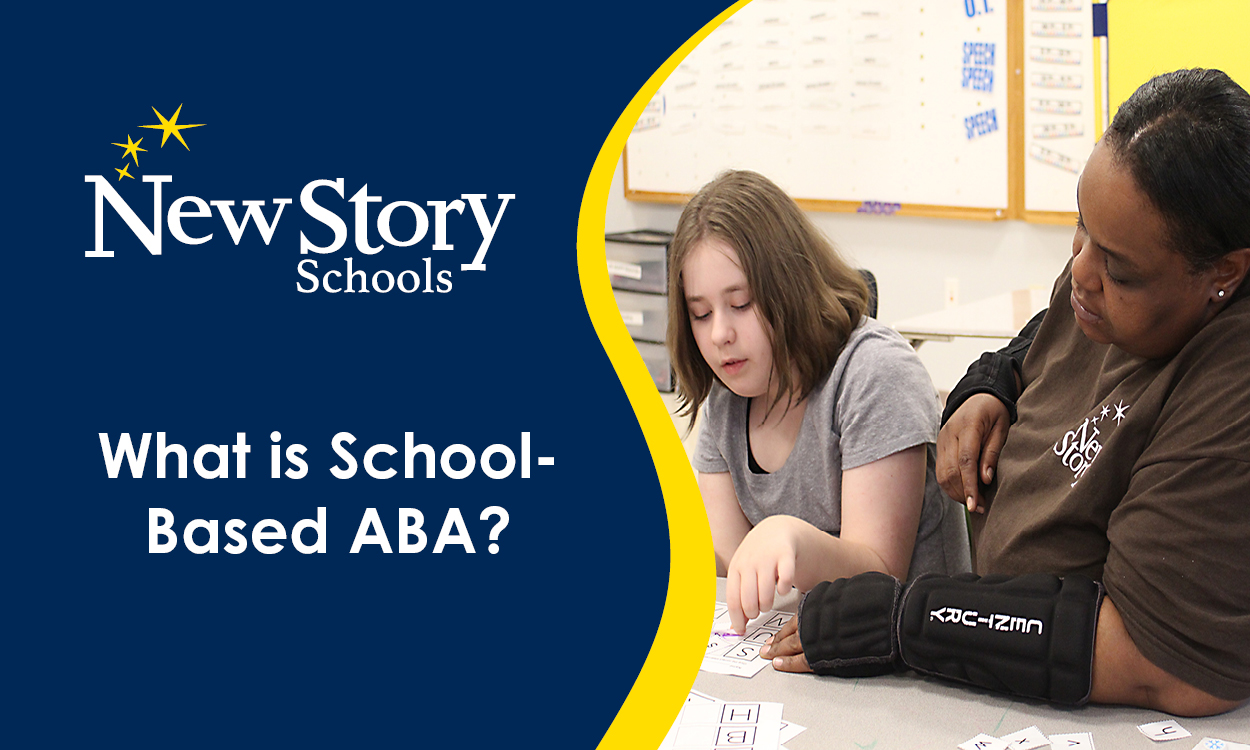What is School-Based ABA?
Posted: May 07, 2025 | Written By: Drew Delligatti | Category:

This blog was written by Mary Berkey, Director of Staff and Family Development at The Learning Spectrum – Johnstown, part of the New Story network of schools and services.
School-Based Applied Behavior Analysis (ABA) allows students to receive ABA services during their school day, rather than going to a clinic. Some school-based ABA programs utilize small group instruction while others provide one-on-one individualized treatments. The most important things to consider when exploring ABA options for your student is ensuring the practices in place are evidence based, the progress is overseen by a Board-Certified Behavior Analyst (BCBA), and the approach involves decreasing problem behaviors with functional communication rather than punishment procedures.
ABA In a Group Setting:
Students with Autism Spectrum Disorder (ASD) benefit from ABA principles being utilized in the classroom. Here are 5 core strategies that enable a more supportive learning environment for students with ASD.
Visual Aids & Schedules: These increase deficits in receptive language, allow for visual processing, and show a visual plan of the day. These may also be seen in a first/then board or token economy system.
Timer Cues: Providing students with ample warnings about transitions, upcoming activities, and plans—paired with auditory timers—offers multiple ways for them to process directions in their working memory, increasing their ability to successfully execute the next steps.
Functional Communication: Just like autism is a spectrum, so are communication needs. A supportive learning environment will allow students to access Augmentative and Alternative Communication Systems (AAC) such as pictures, tablets, and visuals. The goal is to replace those “big feelings” students may have with functional communication replacements. For example, instead of hitting to get a snack, they can touch a picture that says, “Eat.”
Reinforcement: Students should experience three positive interactions for every negative or demand placed on them. They should also have access to a token economy system or a method to obtain the activities or items they enjoy most. If they need a break due to overwhelming emotions, the focus should be on teaching them to communicate this need functionally. Following that, the goal is to co-regulate with them and work together on building coping skills.
Play: Play is a predictor of future progress. Students should have access to social groups, taking turns, waiting, sharing, requesting, and learning. Play establishes meaningful relationships and a feeling of safety.
In any setting, students need frequent and repetitive opportunities to learn a new skill. Whether you choose clinic-based, home-based, school-based ABA or another approach, learning functional replacements for the big feelings that come with ASD will enable the success of your student.
Want to be notified of new articles and resources from New Story Schools? Submit your email and opt into our newsletter!









